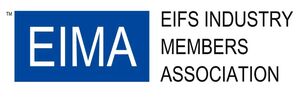Model Building Codes
Specifiers must consider a multitude of items including height of the building; wall area; project location; thermal requirements, air infiltration, and climate and geographical conditions such as wind, and exposure. Working with an EIFS manufacturer and following the applicable building code will help ensure the right product is specified for each project. Below are sections in the Model Building Codes for Canada and the United States that contain specific provisions for EIFS and EIFS with Drainage Systems.
United States
The 2024 International Building Code (IBC) – Section 1407 – Exterior Insulation and Finish Systems (EIFS/EIFS with Drainage) governs the use and compliance requirements for EIFS and EIFS with Drainage on what is commonly referred to as commercial construction. EIFS/EIFS with Drainage must comply with ASTM E 2568, which sets forth minimum testing and performance requirements. EIFS with Drainage is required on framed walls of Type 5 construction with R1, R2, R3, R4 occupancies. Under ASTM E 2273 and the IBC, EIFS with Drainage must have a minimum drainage efficiency of 90%.
The 2024 International Residential Code (IRC) – Section 703.9 – Exterior Insulation and Finish Systems (EIFS/EIFS with Drainage) contains the use and compliance requirements for EIFS and EIFS with Drainage under what is known as the Residential Code for One- and Two-Family Dwellings. As with the IBC, EIFS and EIFS with Drainage must comply with ASTM E 2568. Under the IRC, Barrier EIFS are limited to applications over substrates of concrete or masonry wall assemblies. EIFS with Drainage are required on all wall assemblies except for concrete or masonry walls where either EIFS or EIFS with Drainage are allowed. Per ASTM E 2273 and the IRC, EIFS with Drainage must also have a minimum drainage efficiency of 90%.
Canada
The 2020 National Building Code of Canada (NBCC) governs the use and compliance requirements of EIFS (Exterior Insulation and Finish Systems) and liquid applied water resistive barriers (LA-WRB) via the CAN/ULC-S716 standard. This standard is divided into three sections: material and system evaluation, installation requirements, and design specifications. Pertinent sections of the NBCC include Part 5 (Environmental Separation) and Part 9 (Housing and Small Buildings), which incorporate these standards to ensure compliance with drainage capacity, thermal resistance and moisture protection.
The 2020 National Building Code of Canada (NBCC) governs the use and compliance requirements of EIFS (Exterior Insulation and Finish Systems) and liquid applied water resistive barriers (LA-WRB) via the CAN/ULC-S716 standard. This standard is divided into three sections: material and system evaluation, installation requirements, and design specifications. Pertinent sections of the NBCC include Part 5 (Environmental Separation) and Part 9 (Housing and Small Buildings), which incorporate these standards to ensure compliance with drainage capacity, thermal resistance and moisture protection.

